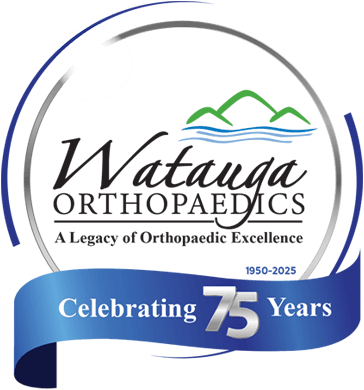Spondylolisthesis - Slipped Vertebrae
Click the white PLAY button to start video.
Spondylolisthesis may not cause symptoms. Spondylolisthesis can cause back or leg pain. The majority of people with symptomatic spondylolisthesis are treated successfully with pain management and restoring function.
Read more about Spondylolisthesis - Slipped Vertebrae
Introduction
Spondylolisthesis may not cause symptoms. Spondylolisthesis can cause back or leg pain. The majority of people with symptomatic spondylolisthesis are treated successfully with pain management and restoring function.
Anatomy
Causes
Spondylolisthesis results when a vertebra slips out of position in the spine. Degenerated facet joints or a fracture can cause a vertebra to move. With age, the facet joints can deteriorate, weaken and cause one vertebra to slip forward. This condition is called degenerative spondylolisthesis. A stress fracture in the pars on a vertebra (spondylolysis) can lead to isthmic spondylolisthesis, but this is rare occurrence. A vertebra that has moved out of position can press on nerves or narrow the size of the spinal canal (spinal stenosis).
Symptoms
A vertebra that has slipped significantly or caused the spinal canal to narrow can press on the spinal nerves. The spinal nerve compression can cause low back and leg pain, leg weakness, lower body numbness or tingling, and reduced or absent leg reflexes.
Prolonged standing or walking may increase your symptoms. Bending forward or sitting may relieve symptoms because these positions increase the room in the spinal canal, taking pressure off the spinal cord.
If the spinal nerves in the lower end of the lumbar spine are compressed, a condition called Cauda Equina Syndrome may result. Cauda Equina Syndrome can cause loss of bladder and bowel control, as well as low back pain, leg pain, leg weakness, lower body sensory deficits, and reduced or absent leg reflexes. If you suspect you have Cauda Equina Syndrome, seek emergency medical treatment immediately.
Diagnosis
Spondylolisthesis is graded based on how far the vertebra has moved out of place (slippage). The grade and the severity of symptoms are considered when planning treatment. Spondylolisthesis is graded as follows:
Grade 1: Less than 25% of slippage
Grade 2: 25-50% of slippage
Grade 3: 50-75% of slippage
Grade 4: Greater than 75% of slippage
Treatment
Pain relieving and anti-inflammatory medications may be used to ease symptoms. If your symptoms do not improve significantly with these medications, your doctor may recommend epidural steroid injections. Epidural steroid injections are used to place medicine directly near the source of pain and inflammation. Steroid medication is used to reduce inflammation and relieve pain. Epidural injections are short outpatient procedures that may be repeated over time.
Surgery may be needed for some people with a Grade 2 spondylolisthesis and those with Grade 3 or higher. Again, the overall percentage of people with spondylolisthesis that require surgery is relatively small. Surgery is necessary when the slipped vertebra is unstable, when symptoms are severe, and when nerve compression causes neurological symptoms. Spinal fusion surgery is used to secure the vertebrae together. A lumbar laminectomy surgery is used to enlarge the spinal canal to take pressure off the spinal cord or nerves.
Am I at Risk
• In rare cases, spondylolysis can precede spondylolisthesis.
• Degenerative spondylolisthesis occurs most frequently in people over the age of 65.
• Women experience spondylolisthesis more often than men do.

Copyright © - iHealthSpot Interactive - www.iHealthSpot.com
This information is intended for educational and informational purposes only. It should not be used in place of an individual consultation or examination or replace the advice of your health care professional and should not be relied upon to determine diagnosis or course of treatment.
The iHealthSpot patient education library was written collaboratively by the iHealthSpot editorial team which includes Senior Medical Authors Dr. Mary Car-Blanchard, OTD/OTR/L and Valerie K. Clark, and the following editorial advisors: Steve Meadows, MD, Ernie F. Soto, DDS, Ronald J. Glatzer, MD, Jonathan Rosenberg, MD, Christopher M. Nolte, MD, David Applebaum, MD, Jonathan M. Tarrash, MD, and Paula Soto, RN/BSN. This content complies with the HONcode standard for trustworthy health information. The library commenced development on September 1, 2005 with the latest update/addition on February 16, 2022. For information on iHealthSpot’s other services including medical website design, visit www.iHealthSpot.com.




